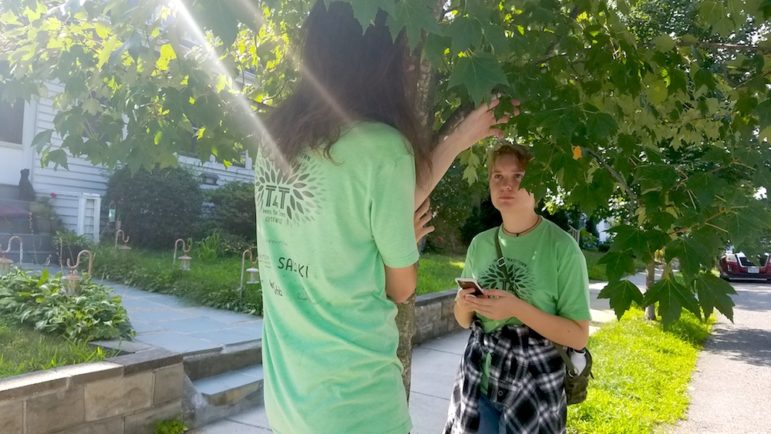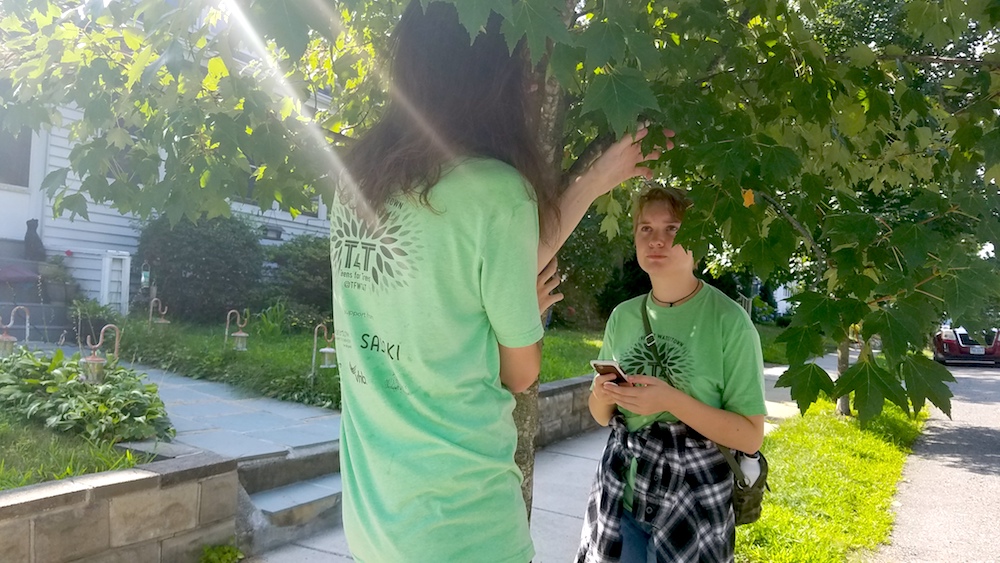
Last summer, a dozen Watertown teens walked over 2 million steps, examined more than 3,000 trees, and shared their knowledge of trees with about 300 people.
The goal of this year’s TFT group was to update the town’s street tree index, which was created in 2008. They also sought to raise awareness of the impact and benefits of trees on an urban/suburban community.
The group inventoried trees across Watertown, and surveyed more than 80 percent of the town’s street trees, Meshoulam said.
“We have about 900 to go,” Meshoulam said. “Mainly parts of precincts 2, 10 and 12.”
The teens combed the town looking at the street trees and collected data. They:
- identified the species (and noted the degree of confidence)
- measured the size of the tree by taking the Circumference at Breast Height (CBH)
- ranked the tree’s health by looking at the percent of green leaves (80-100 percent is good, 50-80 percent is fair, 1-50 percent is poor, and zero is dead, and stumps)
- identified potential locations for new street trees
The teens did not spend their entire summer surveying trees. They took field trips to Mount Auburn Cemetery, Arnold Arboretum, the Harvard Natural History Museum and the Charles River, where they heard from experts on trees, and learned about how to prune trees.
They also shared their knowledge with youngsters at the Watertown Boys & Girls Club, and had a table at the Watertown Farmers Market. They also spoke to people passing by as they were doing their street tree surveys.
“(The) teens felt confident and proud giving good advice and information to people on the street,” the TFT report reads.
The conclusions of the report found that:
- the program should place more emphasis on stewardship because the teens enjoyed the pruning and care of trees and “it gave them a sense of efficacy”
- students should be trained to give more information so they can provide 1-on-1 street tree ambassadorship
- outreach should be more diverse to better suit the teens’ different interests and skills
- activities should be tied to the key learning goals, which should be reinforced through the summer
The report also touched on ways to make the program sustainable, including:
- when seeking applicants emphasize the rigor of the program
- the educational programs should be spread through the time of the program to give students a break from the heat
- find stable funding sources, including possibly Town Departments, foundations, and individuals
- find ways for the teens to work in concert with Watertown’s Tree Warden
The report also includes the data from the students’ responses on the pre- and post-program surveys.
See the final Trees for Watertown report by clicking here.
